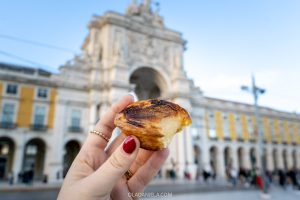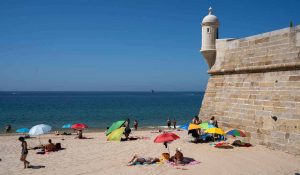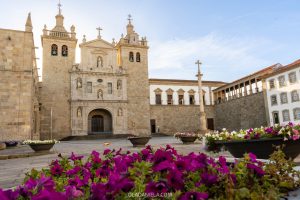I didn’t find any secret chambers, underground tunnels or white messenger pigeons while exploring Tomar – but the legends of the mysterious Knights Templar still inspire visits to this off-beat Portuguese city. Tomar, a 90-minute drive north of Lisbon, holds a unique place in the nation’s historical and cultural narrative. It was here that the Knights Templar, a powerful medieval military and religious order, founded the town for their headquarters in 1160.
Whether you’re drawn by the weight of its history, or want to explore a pretty, personality-packed small city, Tomar is the perfect central Portuguese destination for a day trip or weekend. In fact, it was recently named the top off-the-radar summer holiday destination on the European Hidden Gem Index.
In this guide, I’ll share the best things to do in Tomar, plus where to stay in town. Let’s step into the past and see what makes this town so extraordinary.
Contents
ToggleIs Tomar worth visiting?

Absolutely. Tomar is one of Portugal’s most underrated gems – a small city packed with history and charm set along the Rio Nabão. You can easily get a train there from Lisbon, and the old town is super walkable and peaceful.
A brief history of Tomar…

Tomar was founded in 1160 by Gualdim Pais, a Portuguese knight who fought with King Alfonso Henriques against the Moors. He was Portuguese Grand Master of the Order of the Knights Templar, a medieval military and religious order originally formed during the Crusades to protect Christian pilgrims traveling to the Holy Land. Gualdim Pais built the Convento do Cristo at a strategic outlook, high above what would later become Tomar.
The Templars grew extremely powerful in Europe, so when Europe’s leaders and the Papacy suppressed the order – they rebranded and moved to Portugal as the Order of Christ in 1319. From their headquarters in Tomar, the order supported Portugal’s maritime explorations with Prince Henry the Navigator as the Grand Master.
Read next… Best day trips from Tomar
Top things to do in Tomar
Visit the Templar Castle & Convent of Christ
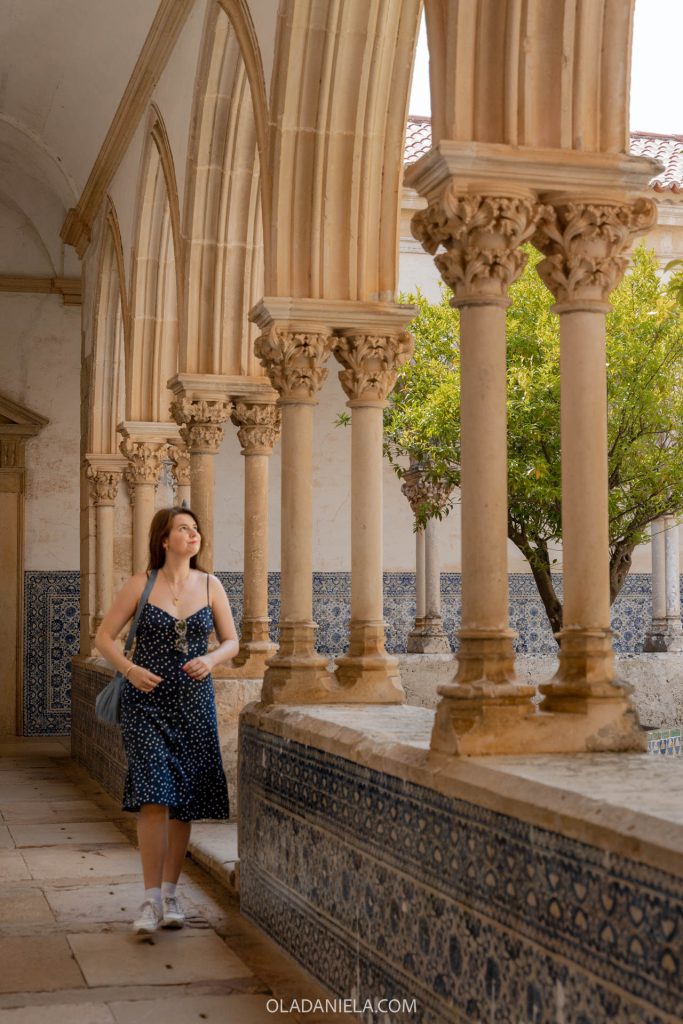
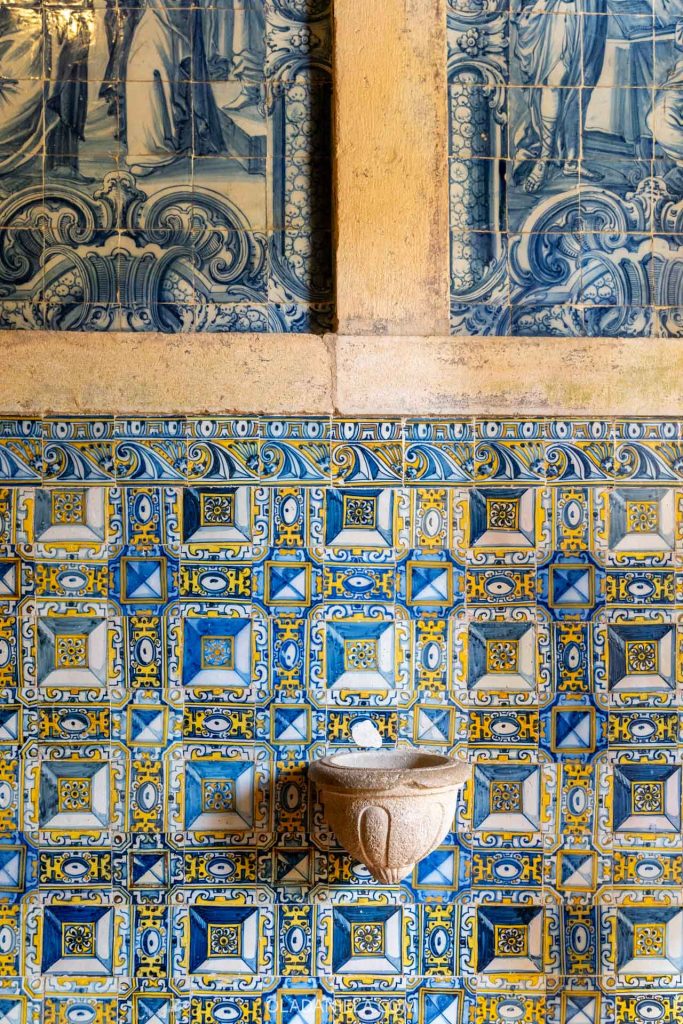
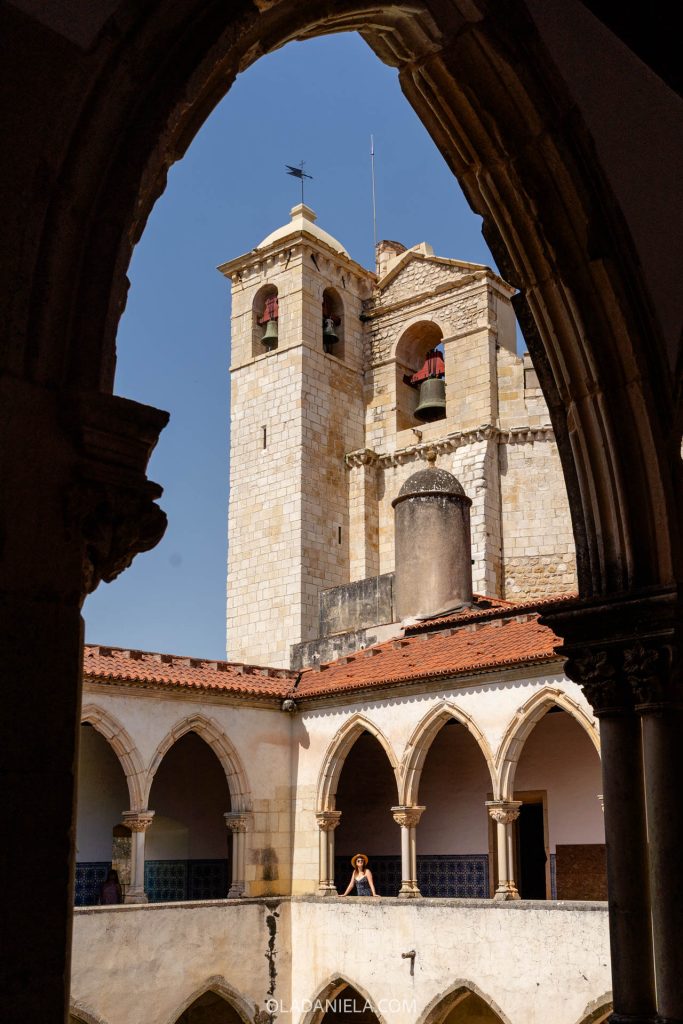
This UNESCO World Heritage site is easily one of the most important – and spectacular – historic buildings in Portugal, and should be reason enough to visit Tomar. Built high above the town, this vast complex began in 1160 with the Charola – a circular chapel inspired by Jerusalem’s Church of the Holy Sepulchre. The convent’s powerful and dramatic medieval jewel, built by Gualdim Pais, has six sides on the outside and an octagonal centre.
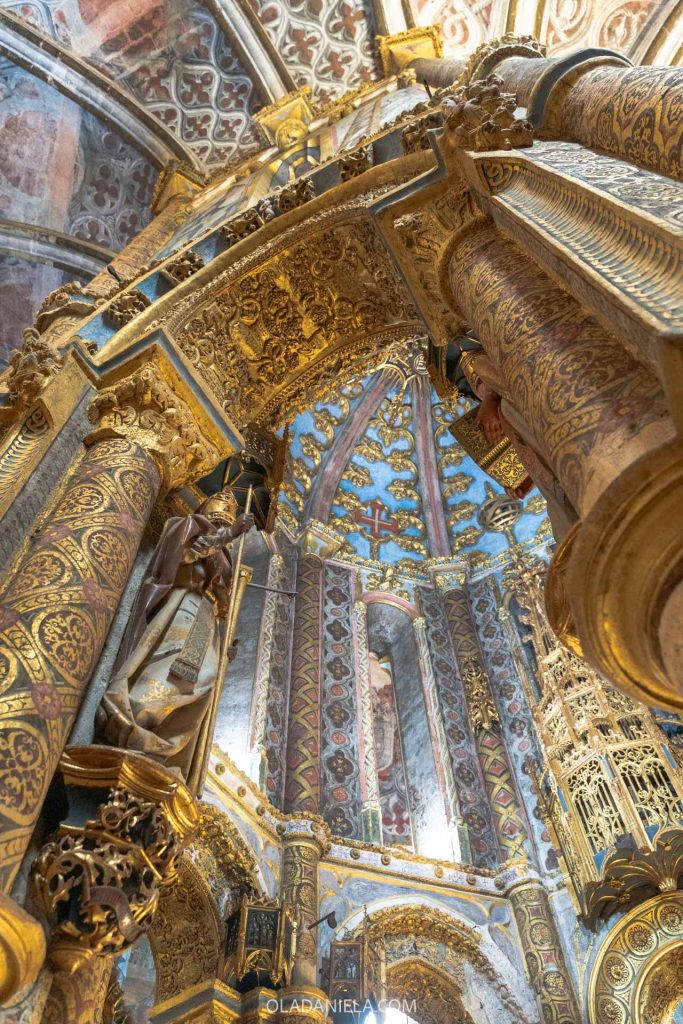
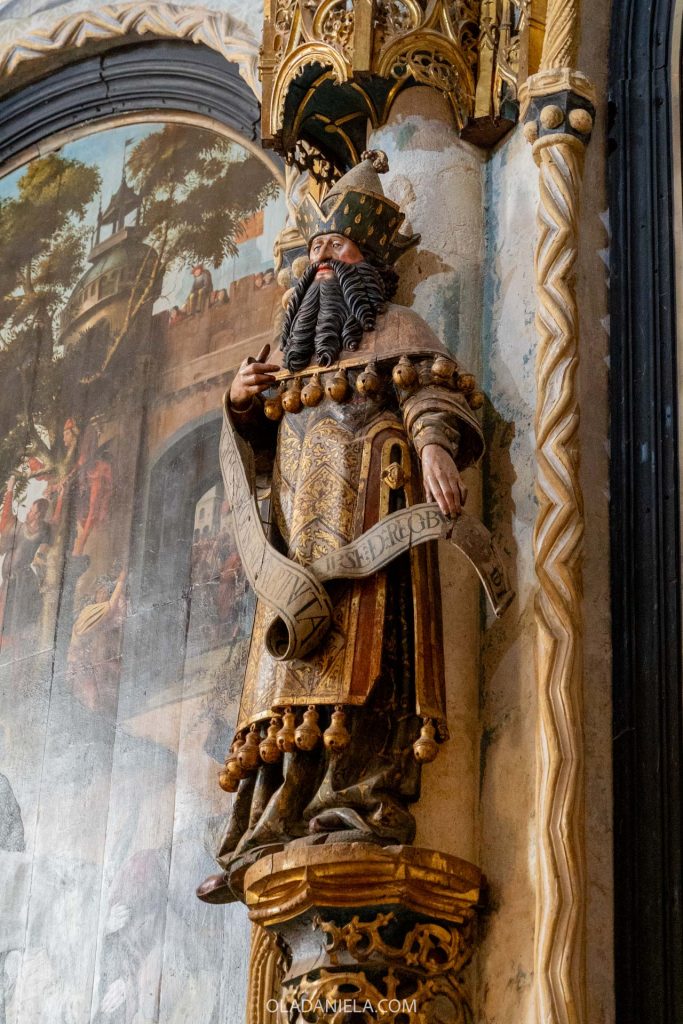
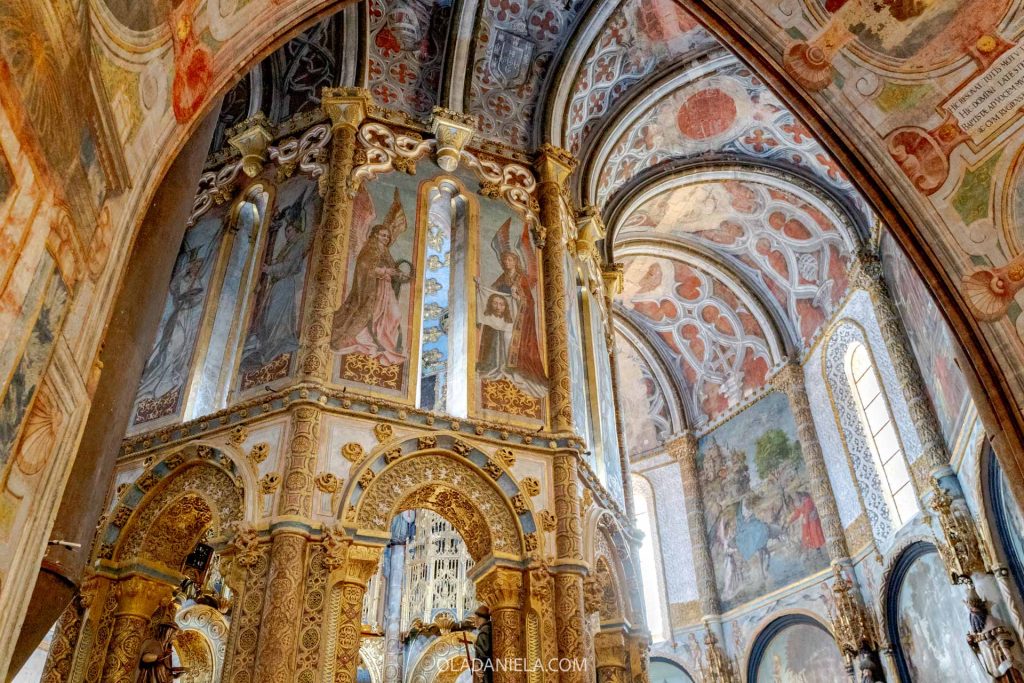
The rich paintings and statues you see today were added during the early 16th-century reign of Dom Manuel I. He also added an ornate Manueline doorway and the extraordinary stone-carved “window of the world” with carved motifs reflecting Portugal’s maritime discoveries. Beyond that, there are eight cloisters and (seemingly) endless corners and corridors to explore.
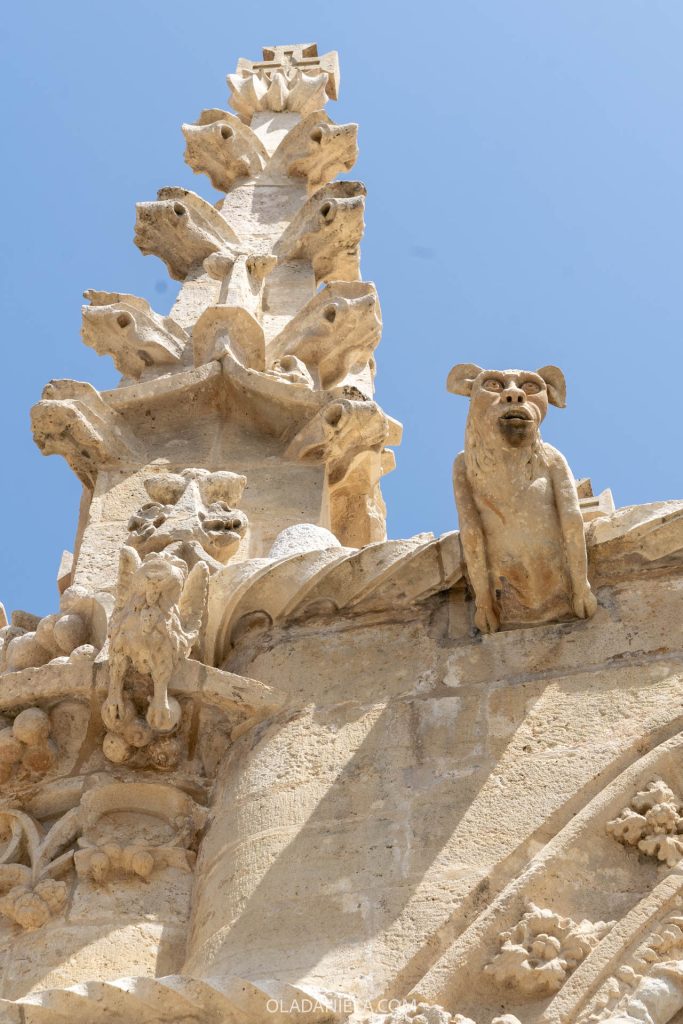
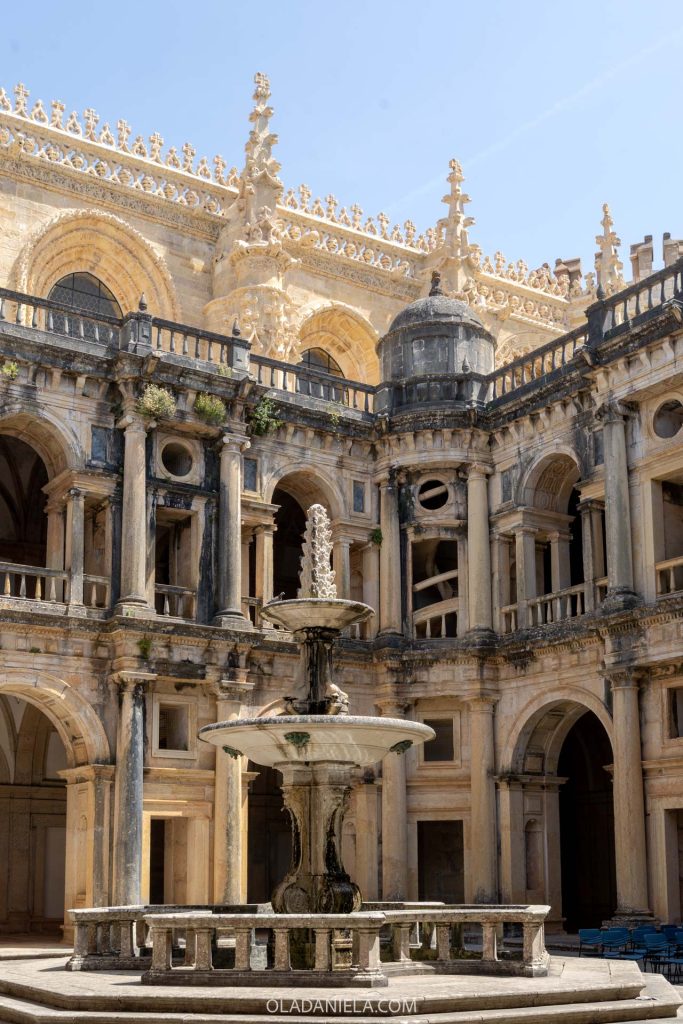
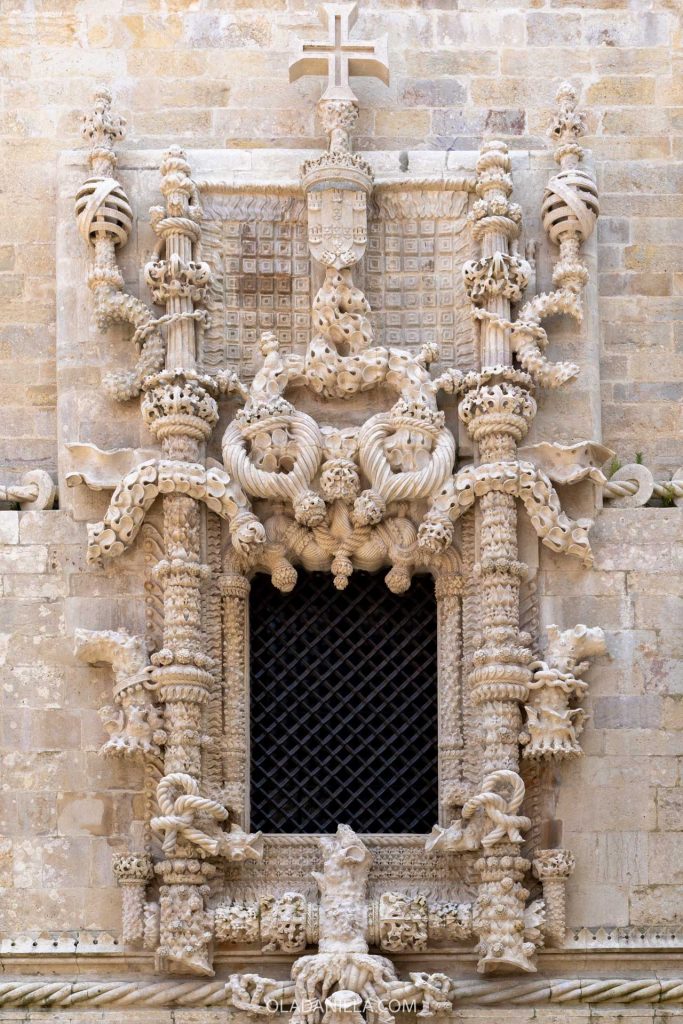
The Templar Castle lies just next door and was founded in 1160 to defend the town and the Templars’ stronghold. Its thick stone walls and towers hide a landscaped garden that links up with the Mata Nacional dos Sete Montes (Seven Hills National Forest) – Tomar’s verdant public park.
Need to know: Give yourself at least 2-3 hours to explore. Entry is on the north side, which is not well signposted if you’re coming on foot from the town. It takes 10-15 minutes to walk uphill from town.
How to explore: Buy official tickets here or consider a guided tour of the convent. Honestly, it’s massive so if you like to hear stories behind the spaces book a guided tour or guided day trip from Lisbon.
Note: entry is free for Portuguese residents.
Explore Tomar’s old town
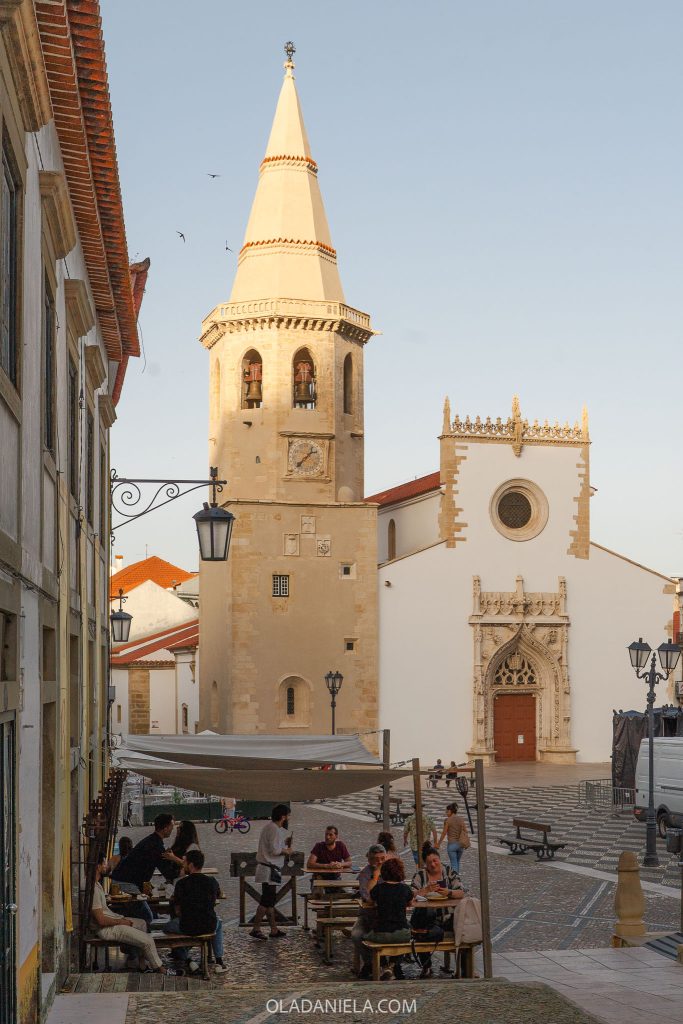
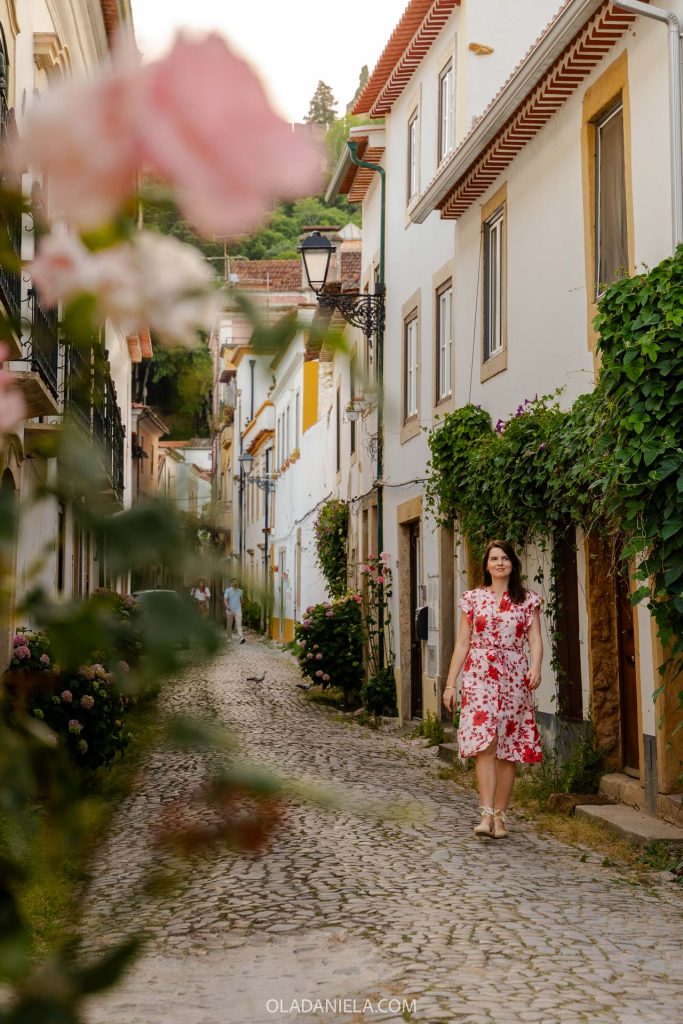
Tomar is a pretty little city. Let yourself loose in the old town, where the skinny historic streets are a photographer’s dream. At the heart is Praça da República, the main square overlooked by the elegant Igreja de São João Baptista and the 16th-century town hall. There’s a fun medieval-themed bar – Taverna Antiqua – ideal for a drink, or head down the main pedestrian street: Rua Serpa Pinto.
Along here you’ll find shops, boutiques and cafés that spill out onto the cobblestones. Stop for a drink at the historic Café Paraiso and admire the Bauhaus interior, or try local traditional sweets at the Estrelas De Tomar bakery. At the end of this street you’ll meet the Nabão River and Mouchão Park.
Wander Mouchão Park river island
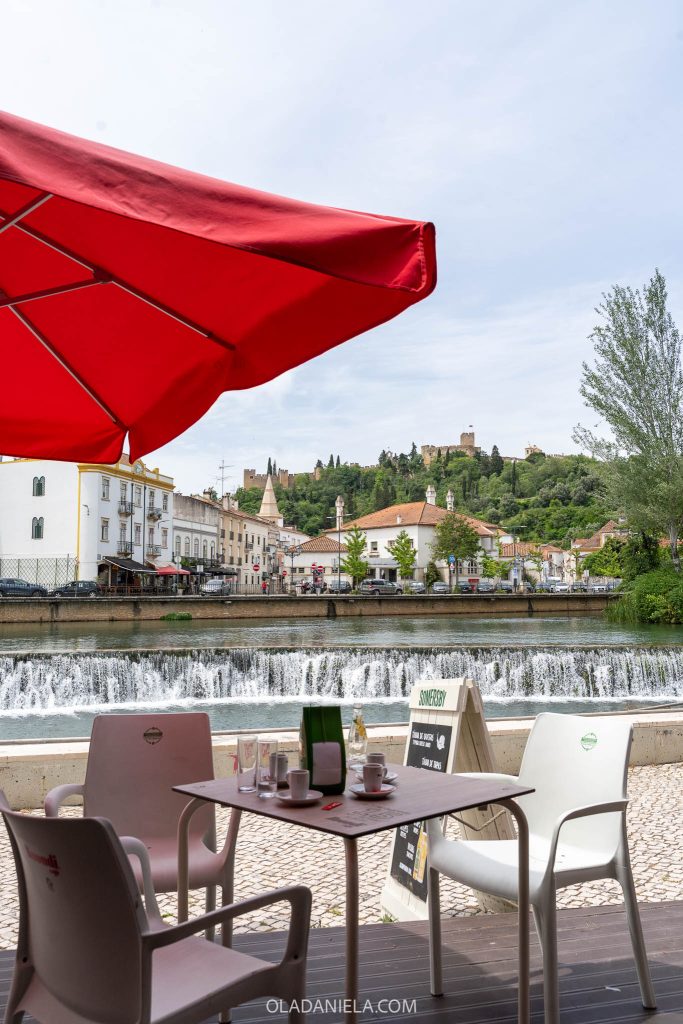
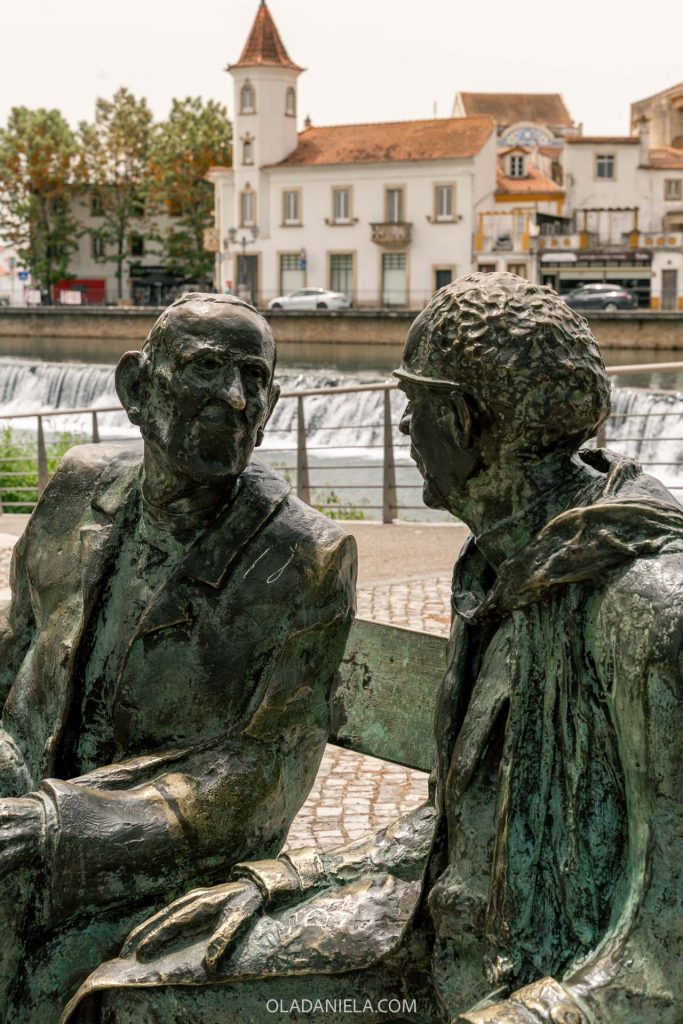
Just steps from the old town, Mouchão Park offers a leafy escape for residents. Cross a footbridge to find picnic-worthy grass, a wooden waterwheel and plenty of shade on a small island in the Nabão River. The park extends back to the mainland near the Orquestra de Sabores kiosk, where you can sit and enjoy a coffee, gelato or summer snails with views of the castle. There’s a free playground next to the café, making it popular with families. If the kids need more fun, Corda Bamba offers stacks of activities from kayak hire to giant inflatable river balls.
Walk along Pegões Altos Aqueduct
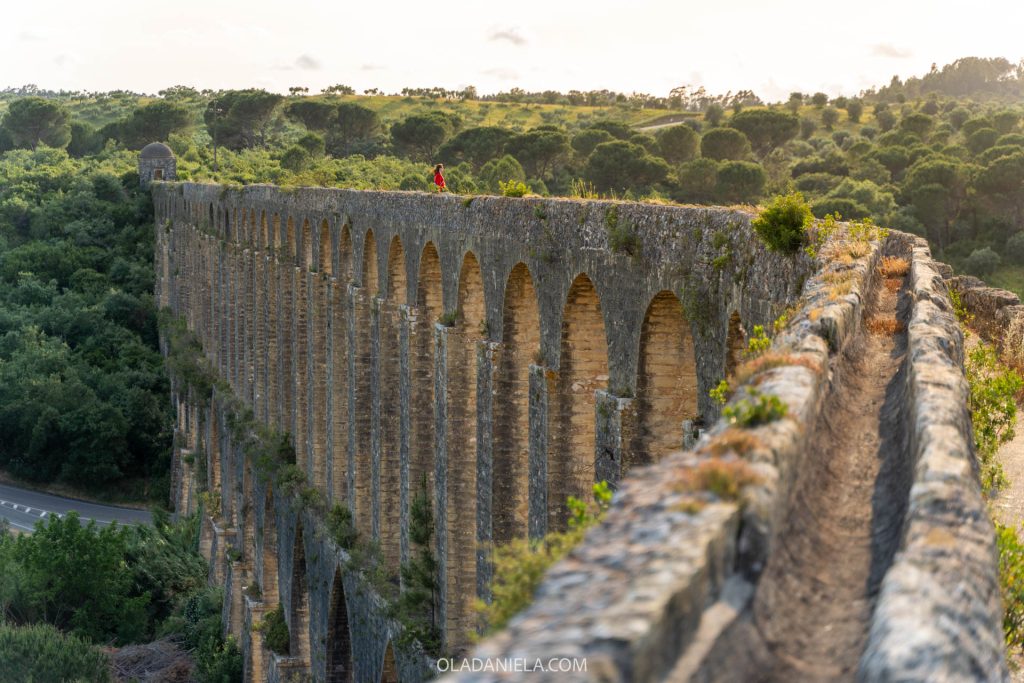
It’s worth the five-minute drive from town to go admire this jaw-dropping feat of 16th-century engineering. The Aqueduto dos Pegões Altos was built to carry water to the Convent of Christ and it stretches for six kilometres (3.7 miles) across towering arches. You can walk across sections of the aqueduct – the views are well worth it, but it’s super high and there are no railings.
Need to know: There’s a dirt car park at this point where you can access the aqueduct. I’d recommend mornings over afternoons to see the site glowing instead of in shadow.
Take a stroll around Mata Nacional dos Sete Montes
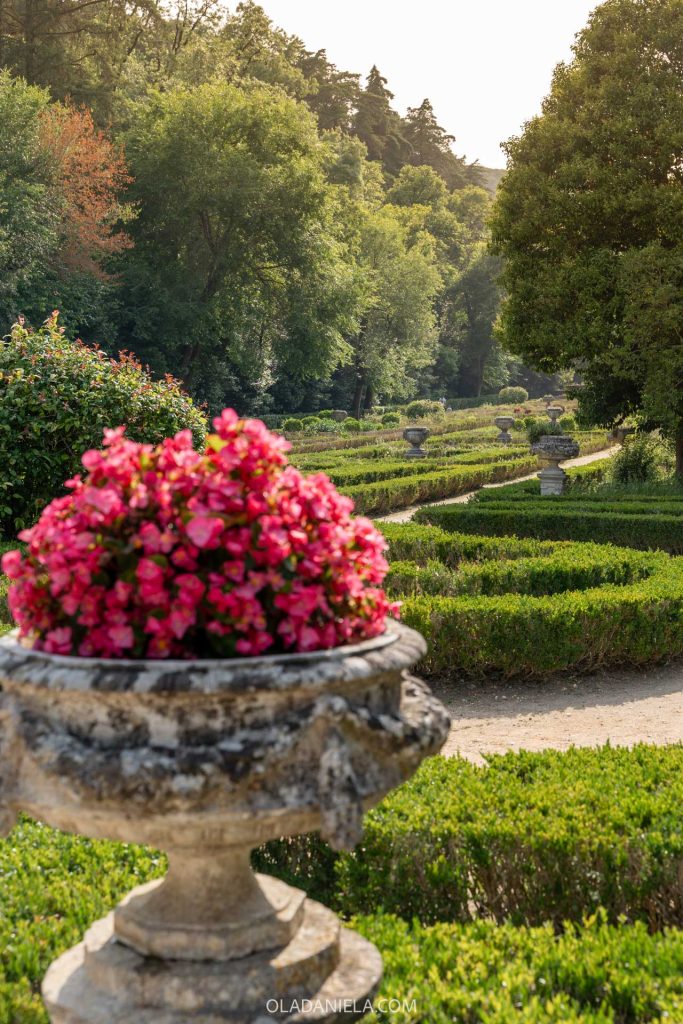
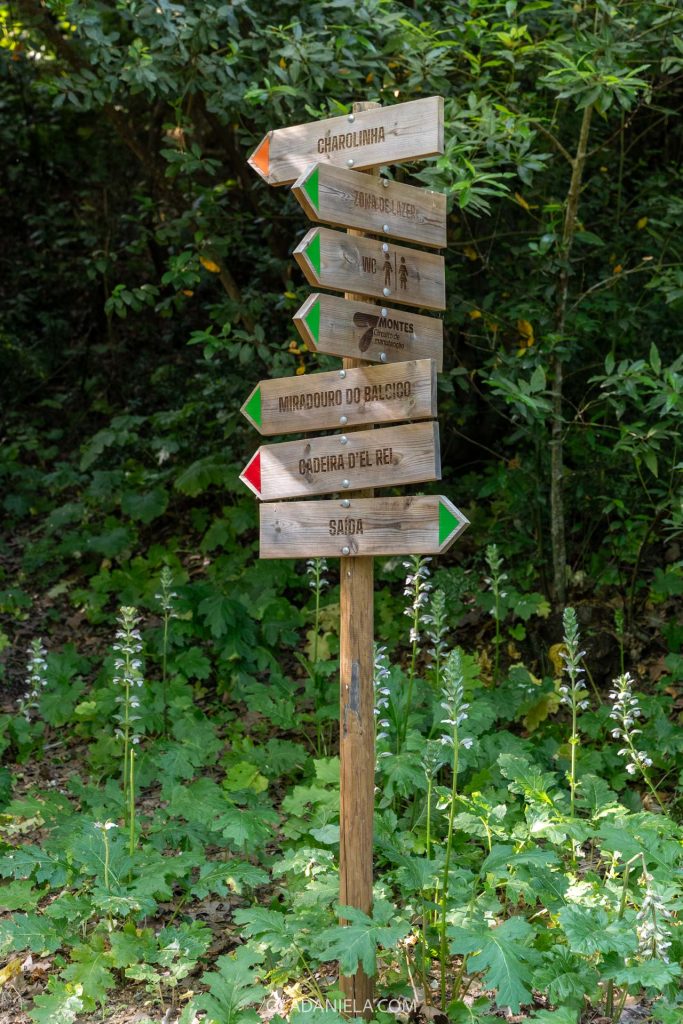
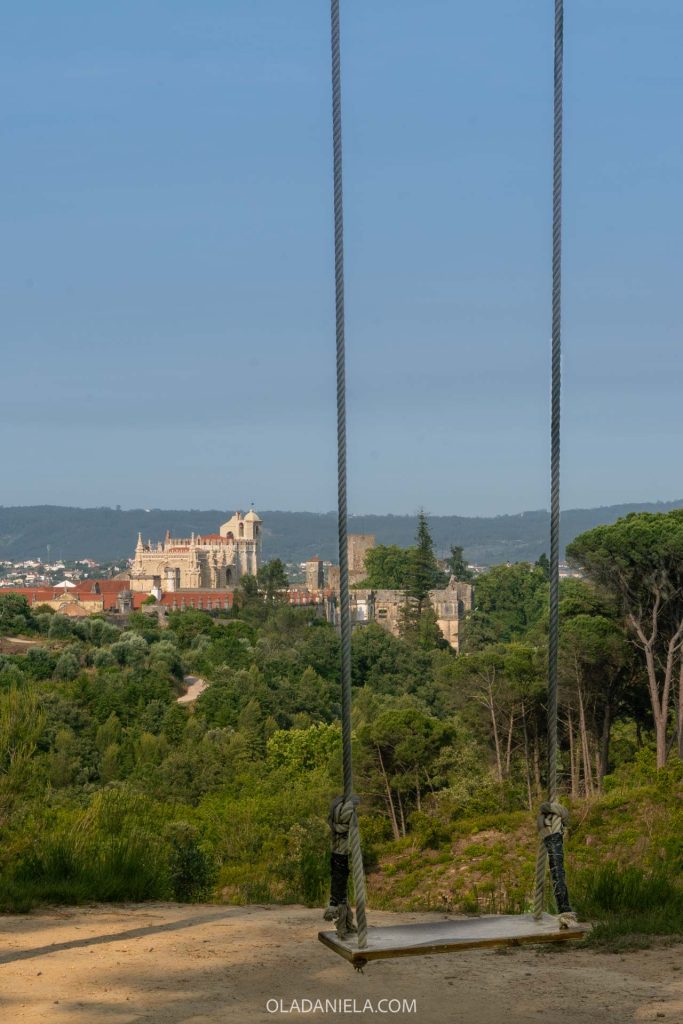
This 39-hectare park is Tomar’s green lung, where you’ll find forests of cypresses, oaks and century-old olive trees with a couple of trails weaving through the vegetation. It’s said the Order of Christ used some of this land for farming, but these days locals use it for exercise, to play sport or to be in nature. There are also playgrounds and picnic areas.
I found the trails to be well signposted and maintained (considering the size of the park) and I made the short, steep trek to the far side where there’s a giant swing on the highest hill that offers views back over the park, famous convent and town.
Tip: There’s a cylindrical tower, known as the “Charolinha” (little Charola), made as a small replica during the Renaissance works on the convent. Follow the signs to find it.
Need to know: This is a gated park with opening hours – don’t get locked in.
See the Museu dos Fósforos (Matchbox Museum)
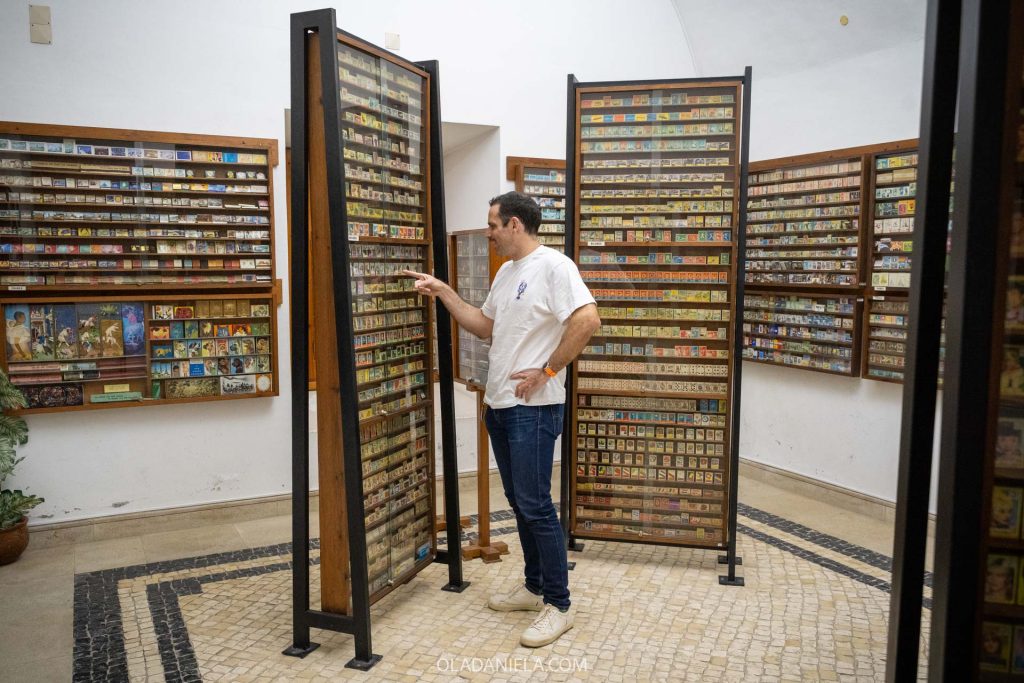
This must be one of Portugal’s quirkiest museums, filled with 60,000 or so matchboxes. It started when a local travelling businessman by the name of Aquiles da Mota Lima bequeathed his collection of 43,000-plus matchboxes (collected from 127 countries across the globe) to Tomar.
The collection began back in 1953, when Mota Lima was travelling to London by ship for the coronation of Queen Elizabeth II. He met an American woman on board who asked if he could collect a few matchboxes and mail them to her. When he returned he had 100 matchboxes for his own collection, and thus the curious obsession began.
Now Tomar’s Convento de São Francisco holds Europe’s largest collection of matchboxes, and you’ll see everything from fast cars and movie stars, to pin-ups and paintings. The oldest dates back to the late 1800s! It’s too much to take in, so skim some counters and deep dive on others to take in the details of Japanese flowers, vintage pin-ups from Cuba, Greek folk costumes, greetings from Niagara Falls, or psychedelic ‘70s owls.
Need to know: It has quite short opening hours and a long lunch break. Pair your visit with the creative workshop below, which shares the convent.
Buy ceramics and tiles from artisans at Oficina de Olaria e Azulejaria
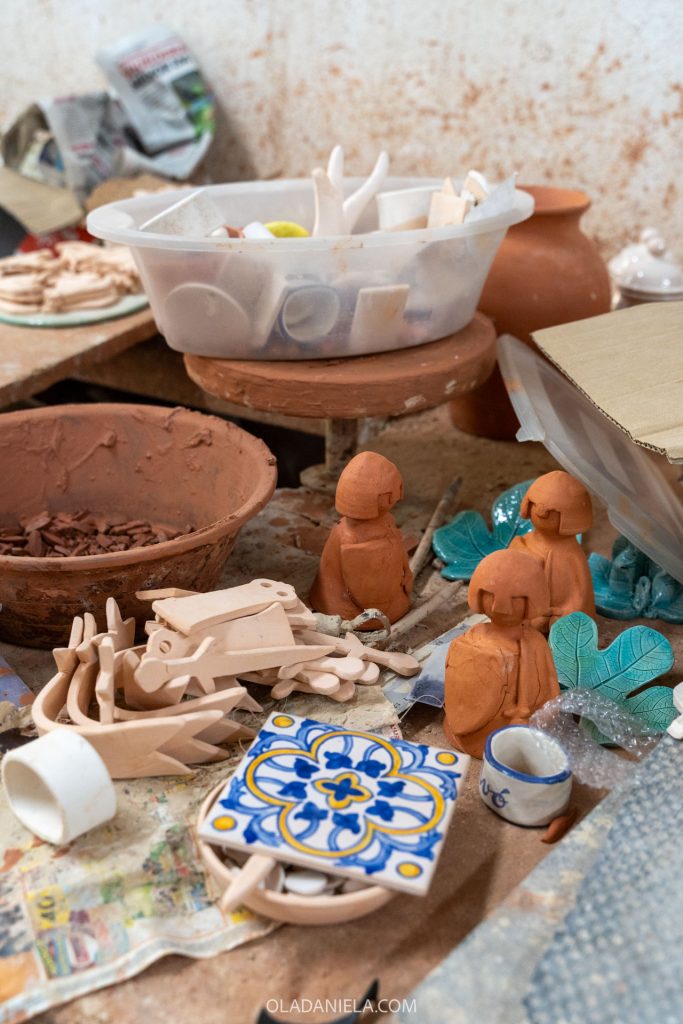
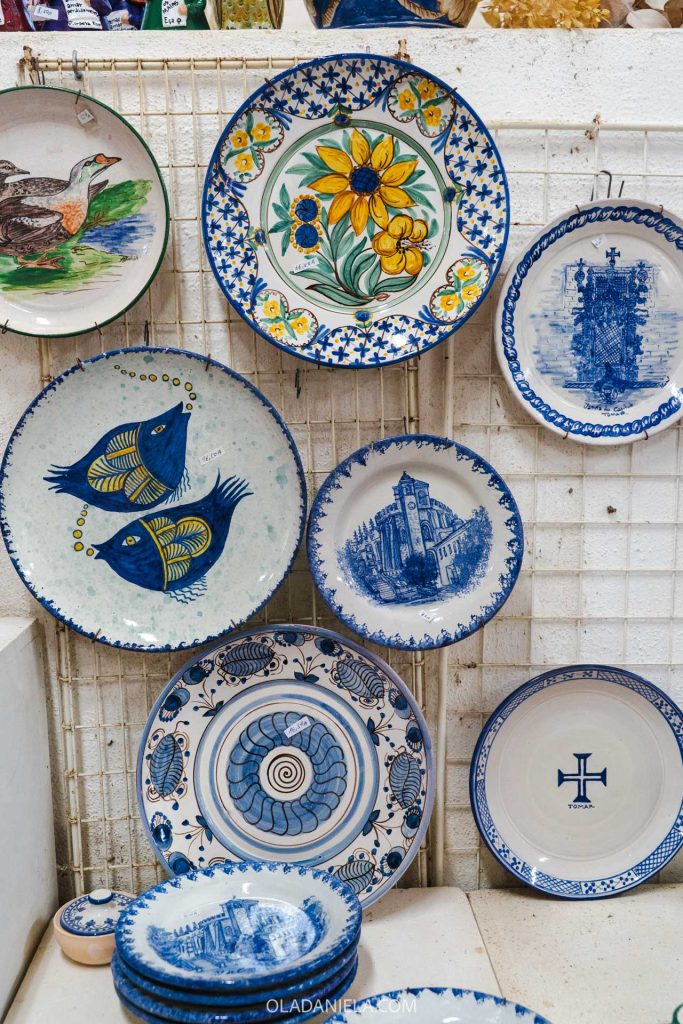
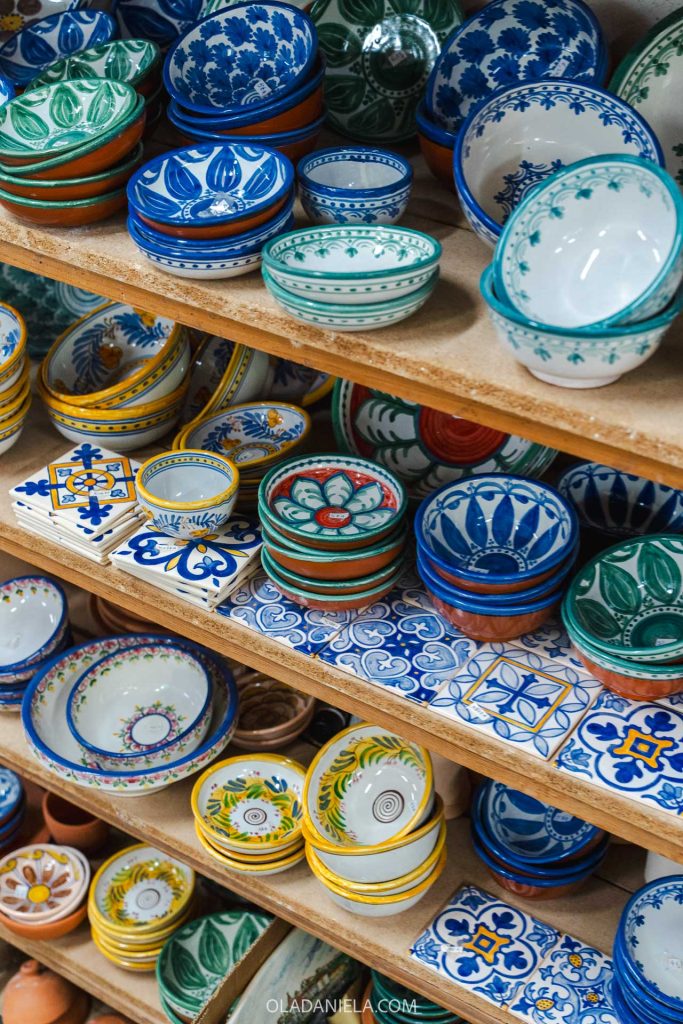
If you have an interest in artisans, ceramics or azulejos then you have to visit this open workshop in Tomar. Seven artisans share a large space within the old Convento de São Francisco, where you can watch them at work painting tiles or shaping clay on the wheel.
One of the ladies told me it has been open 35 years and each person works in their own style and projects. It’s an interesting space to see, with lots of little magnets and coasters that make ideal souvenirs.
Need to know: It’s opposite the matchbox museum, so pair the two!
Cool museums in the old mills of Levada D’el Rei
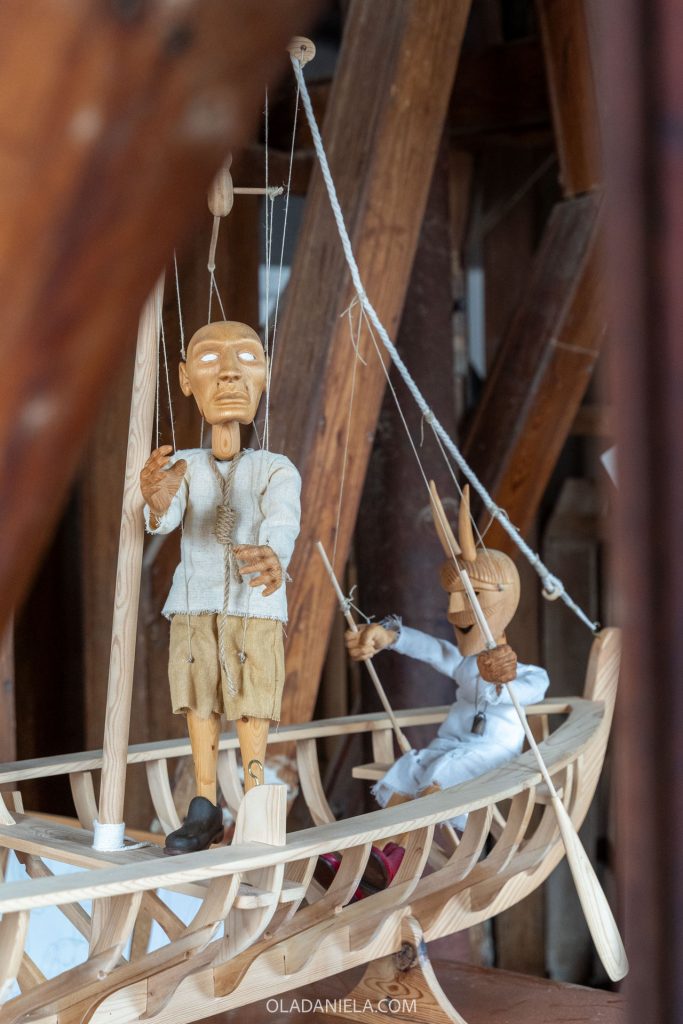
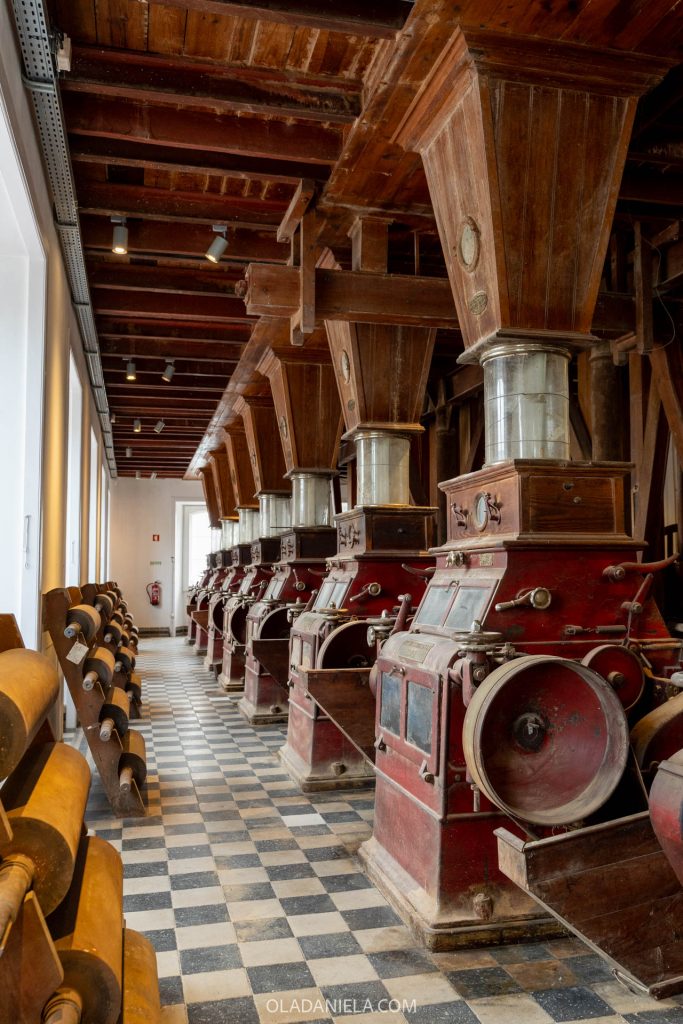
What I didn’t expect from Tomar was a bunch of cool cultural spaces and unique museums and galleries known as the Complexo Cultural da Levada – and they’re all free to visit. Along the Nabão River lies a series of cute white buildings and a levada (canal), that date back to the 12th century. They were the town mills and olive press, and later a power station.
- A Moagem – Fábrica das Artes – My favourite space! Explore the five-storey old flour mill that is now the Arts Factory. Once upon a time, this 20th-century factory could produce 30,000kg in 24 hours. On each level local artists and creatives work in spaces alongside historic mill equipment, all under a faint layer of flour dust. A unique and not gluten-free arts space.
- Centro Interpretativo Tomar Templário – Small museum with a modern permanent exhibition explaining the history, heritage and traditions of Tomar. Essential stop.
- Central Elétrica de Tomar – Núcleo Museológico – Old power station that tells the story of how Tomar was one of Portugal’s first cities to have public electricity in 1901.
- Fundição Tomarense – Núcleo Museológico – Explore the details and history of this old iron foundry.
Visit the contemporary gallery and photography museum
There are two gallery spaces worth a visit in Tomar. The first is a photography museum – the Centro de Estudos em Fotografia de Tomar – installed in a cool architectural building called Casa dos Cubos. When I passed by there were two small (free) exhibitions, and a little explainer about Tomar’s first photographer. There’s also the Contemporary Art Museum, created in 2004, with a collection of 200 works donated by Professor José-Augusto França.
Catch the once-every-four-year Festa dos Tabuleiros

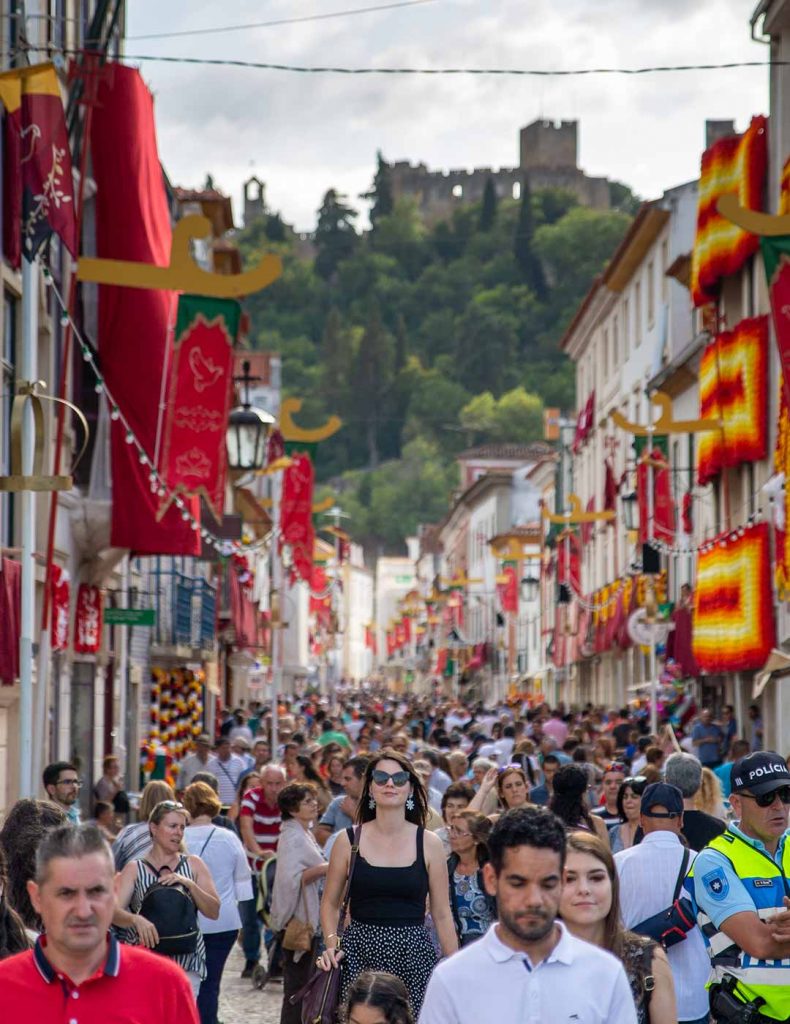
Thirty freshly baked 400-gram (0.8lb) bread rolls and paper flowers are stacked into a towering 1.5-metre-high (5-ft) crown that balances on the heads of Tomar’s women. One by one, more than 700 women march through the streets dressed in white. Some women beam and wave while others grit their teeth as they press on for the five-kilometre (3-mile) parade.
This endless tide of bread, blossoms, sashes, and applause is the main event of the Festa dos Tabuleiros, a colourful festival that dresses up the town once every four years. I’ve (somehow) been twice and it’s an incredible spectacle. The next one should fall in July 2027.
Read next… Festa dos Tabuleiros: Tomar’s colourful Festival of Trays
Explore many churches and one of Portugal’s oldest synagogues
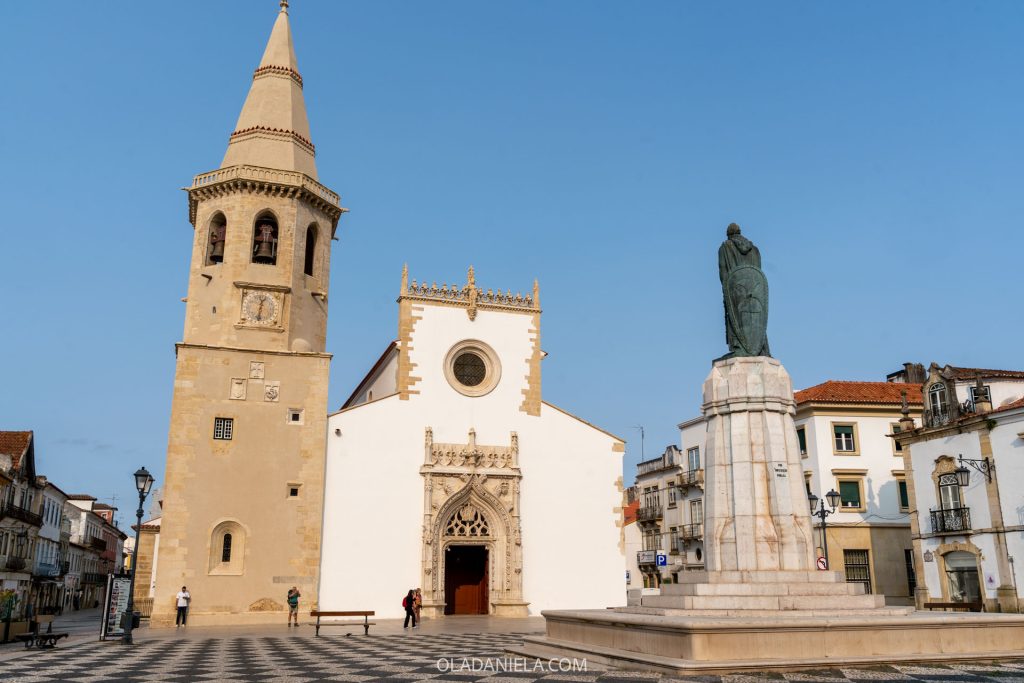
Churches. Every Portuguese village, town and city has more than it possibly needs, so here are a few cool ones in Tomar.
- Church of Santa Maria do Olival – On the outskirts of town, this gothic temple was the pantheon of the Templar Order. It dates to the 12th century and has the bones of Gualdim Pais.
- Church of São João Baptista – (pictured) Opposite town hall on the main square, it’s thought to stretch back to the founding of the city but much of the church we see today is from 1467.
- Synagogue of Tomar & Jewish Museum –Tomar has Portugal’s only Gothic-style Hebrew temple, which was hidden for centuries. It closed in 1496 when Jews were expelled from Portugal. It became a chapel, then a barn, grocery store and warehouse before being classified a national monument in 1921. There’s a small museum there now.
- Chapel of Santa Iria – The patron saint of Tomar is celebrated at this little chapel (I hear there are 17th-century tiles inside, though I’ve never seen the door open).
Visit the daily market, or catch the monthly antiques fair
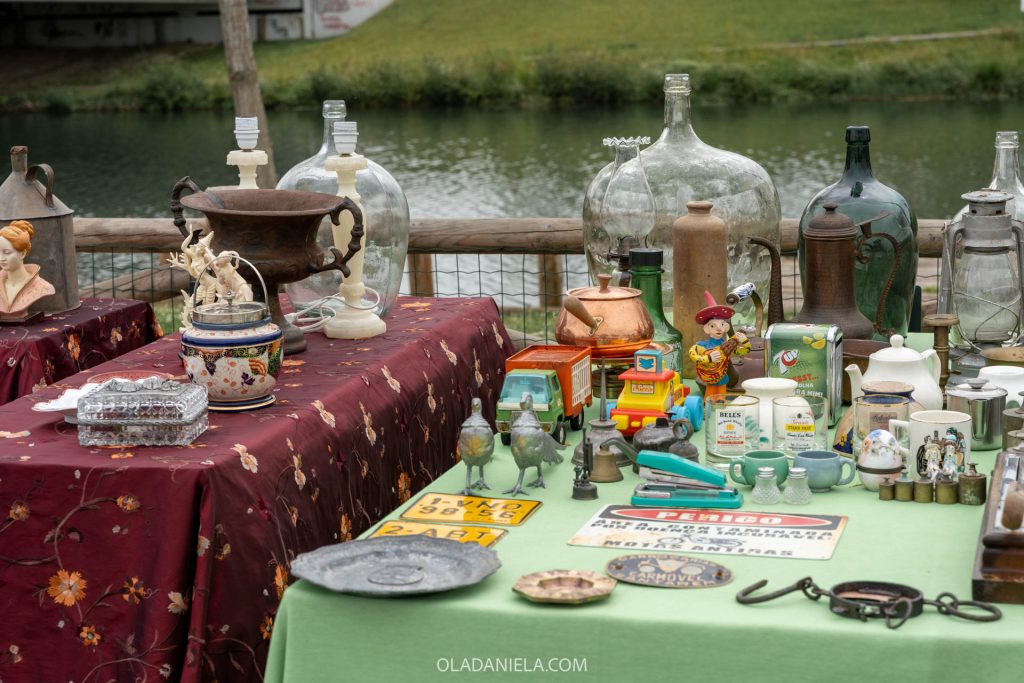
If you love a fresh produce market, then pop into the Mercado Municipal de Tomar for vegetables, fruits, flowers, meat, cheese, bread and fish. It’s a decent enough selection of what’s in season.
I was lucky enough to catch the monthly Feira de Velharias e Antiguidades de Tomar, which falls on the first Sunday of each month from 10am until about 7pm. My strong recommendation is to go before lunch – when I visited about 3.30pm a lot of stalls were already packing up.
Need to know: Bring cash for both markets! There is an ATM at the market, but it was out of cash (happens often on Sundays across Portugal).
Where to eat
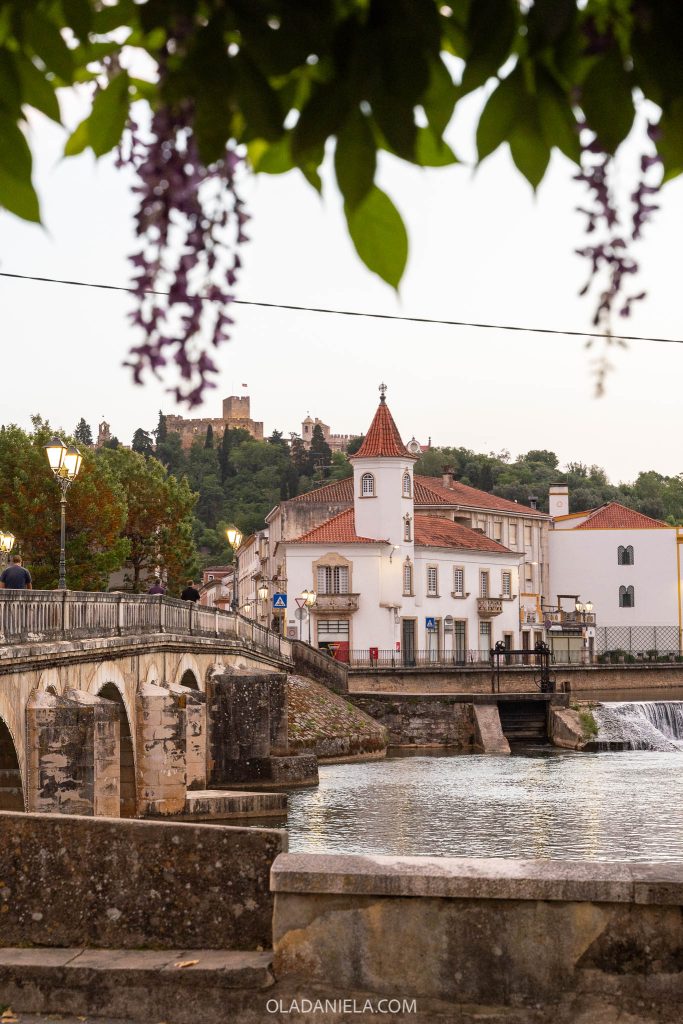
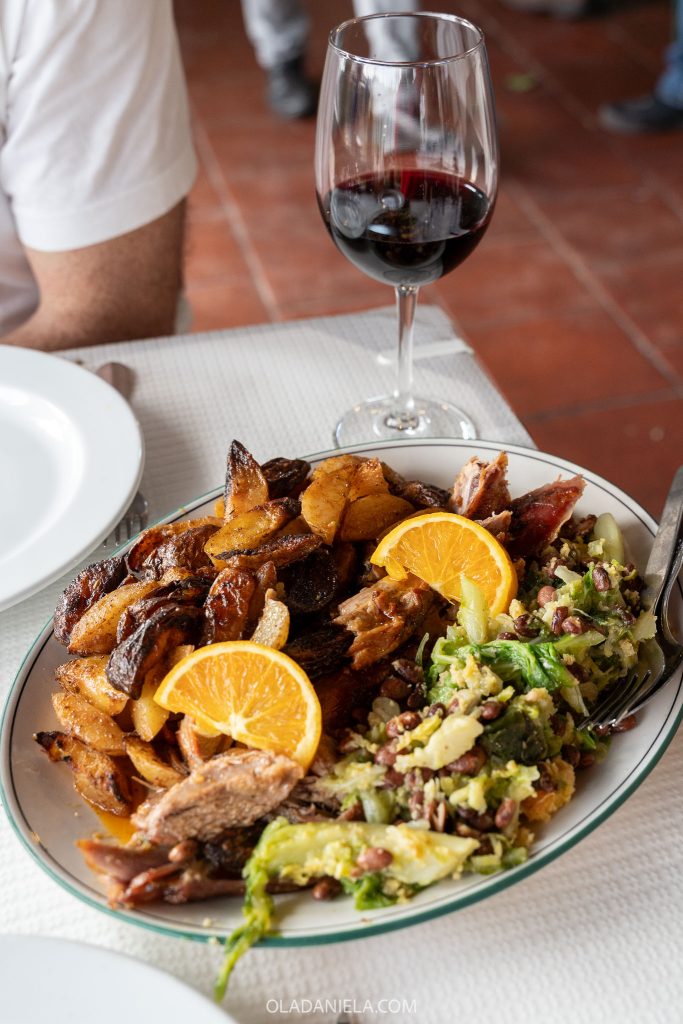
Tomar has some great spots to eat, from riverside terraces like Bela Vista, where century-old wisteria vines frame the Templar Castle, to the hearty local fare at Chico Elias. For something different, Curry Indian Kitchen spices things up. I have a full rundown of my favourite spots – including bakeries, cafés and hidden gems – check out my complete guide to eating in Tomar.
Read next… Where to eat in Tomar
Where to stay in Tomar
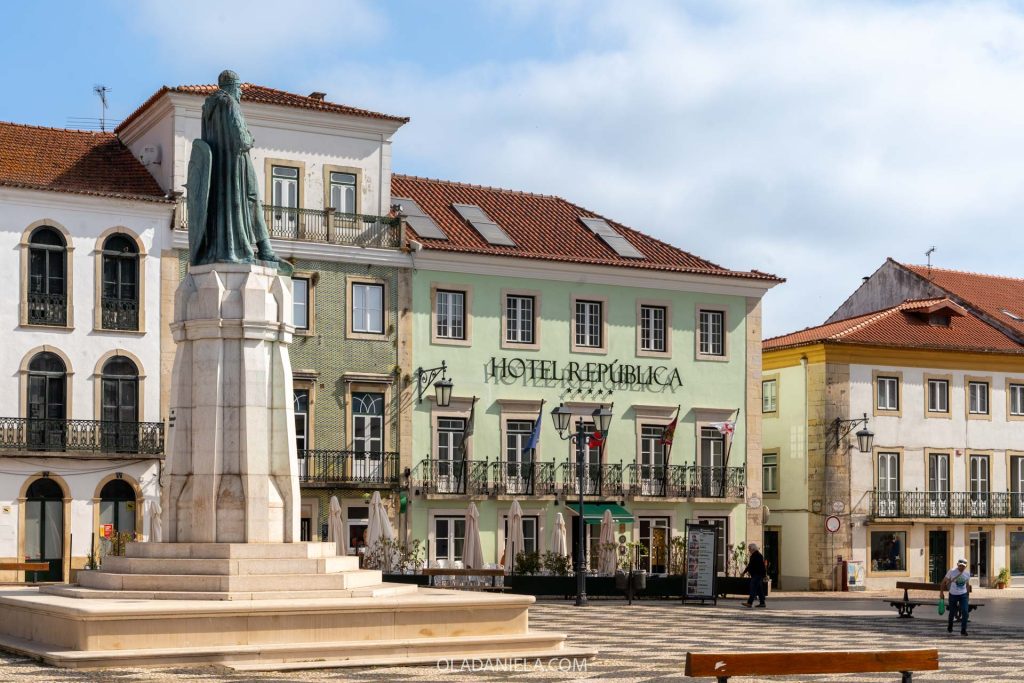
Tomar is a super walkable small city, so I’d choose to stay right in the centre – or at an estate a short drive away. Some suggestions:
- Hotel República – Boutique, luxe 5-star hotel on the main square.
- Casa dos Ofícios Hotel – Design-led 4-star hotel in a historic 18th-century building.
- Thomar Boutique Hotel – 4-star hotel with rooftop views over Tomar.
- Vila Galé Collection Tomar – Convent turned 4-star hotel with heated indoor pool.
- O Paço – Top-rated guesthouse with character and pool.
Countryside estates (<20 mins drive)
- Casarão do Largo da Eira – Beautifully restored farmhouse with rustic stone walls and leafy gardens.
- Quinta do Troviscal – Rural homestay with a pool that overlooks the Castelo de Bode reservoir and breakfast.
When to visit Tomar
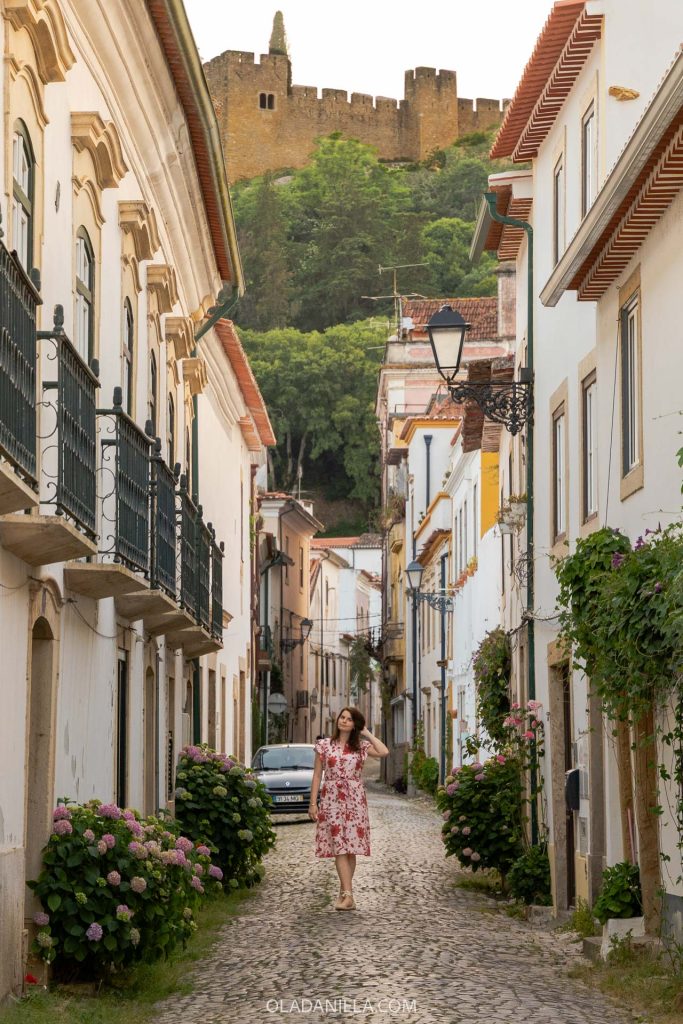
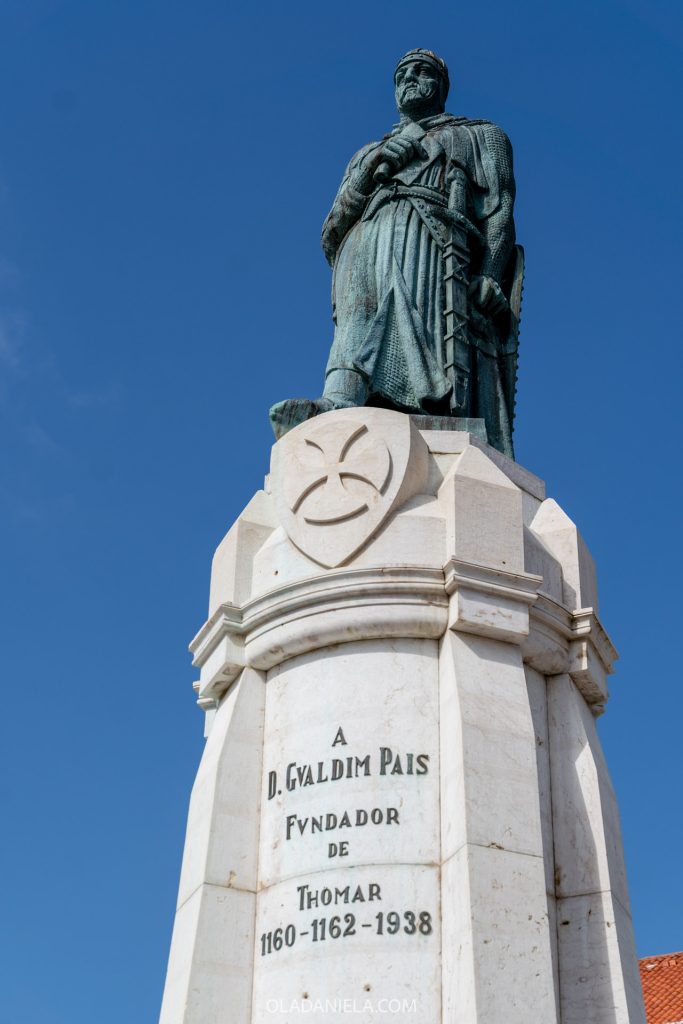
I have to say I laughed when I heard Tomar was named top spot for an off-the-radar summer holiday on the European Hidden Gem Index. Not because I don’t think Tomar isn’t worthy (this article proves it very much is) but because Tomar is hot, hot, hot in summer. It’s an inland city so if you want to explore the town itself, the convent and sights I recommend going in the shoulder seasons or winter.
For this research, I visited late May and two of our six days were above 33°C (91°F). If you do experience hot days, you can reach local swimming spots like Praia Fluvial do Agroal in about 15 minutes.
I also want to mention the Festa dos Tabuleiros, an incredible event that takes place every four years – the next one will be early July 2027. It’s a great reason to go in summer.
How to get to Tomar
By car
From Lisbon, it takes about 90 minutes to reach Tomar. From Coimbra it’s a 50-minute drive, and from Porto it’s about two hours. Parking is straightforward near the historic centre – there is clear signage on streets with a free car park near the train station and a paid carpark behind the town hall. Avoid parking in the old town streets.
By public transport
Trains run regularly from Lisbon’s Santa Apolónia or Oriente stations, taking about 1 hour 45 minutes. It’s the end of the line, so to reach Coimbra or Porto you have to take a regional train to Entroncamento or Santarém and change lines. Buses connect all three cities too.
Can you do a day trips to Tomar?
Yes, it’s easy and possible to do a day trip to Tomar. Either use my guide to plan an independent day via car or train, or join one of these guided tours from Lisbon or Coimbra that blend rich storytelling and history. Here are four options:
- From Lisbon: Boat to Almourol Castle, a guided visit to the Convent of Christ, and time to explore Tomar’s old town. ➡️ Book this small-group adventure, usually max. 8 people – or go private with this tour.
- From Lisbon: Visit 3 UNESCO World Heritage sites in one day: Tomar, Batalha and Alcobaça. Private tour. ➡️ Check your dates and book
- From Lisbon: Visit both Tomar and the religious site of Fátima. ➡️ Book this small-group tour, or a private tour.
- From Coimbra: Visit the Convento de Cristo in Tomar, with a bonus stop at the Castelo de Soure. Small-group tour, max. 4 people. ➡️ Check your dates and book.
Best day trips from Tomar
Central Portugal is an underrated region jam-packed with cool little cities and towns and off-the-radar things to do. While in Tomar I set off to explore more of the Templar trail, which led me to medieval villages and castles nearby. In between I cooled off at river beaches and met friends along the way.
Here’s my guide to the best day trips from Tomar. You could also reach some of these from Coimbra, Santarém, Caldas da Rainha or Lisbon.
That’s what it’s like to follow the trail of the Knights Templar in Portugal and Tomar. Any questions or suggestions? Drop me a comment…
Keep reading….
- Where to eat in Tomar
- 10 perfect days in Portugal: A fast-paced classic itinerary
- 18 best day trips from Lisbon
- 24 hours in Viseu, Portugal’s pretty garden city
- Lisbon’s best restaurants: 41 great places to eat
- My favourite tascas in Lisbon: Where to eat traditional Portuguese food
- Local’s guide to the LX Factory, Lisbon’s creative micro neighbourhood
- Best places to eat octopus in Lisbon
- Best boat tours in Lisbon







